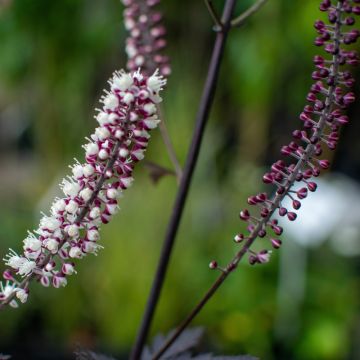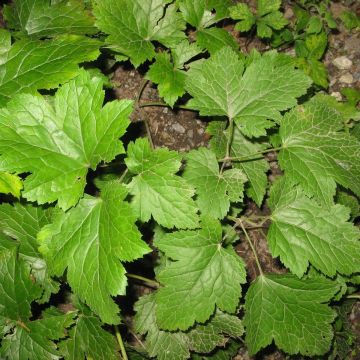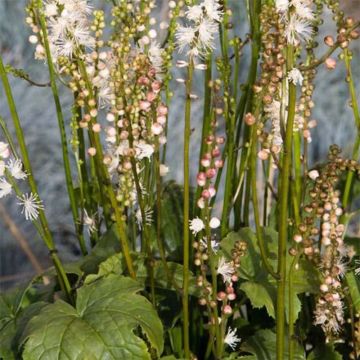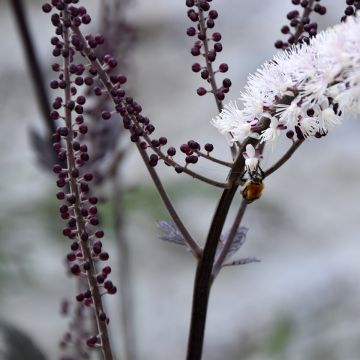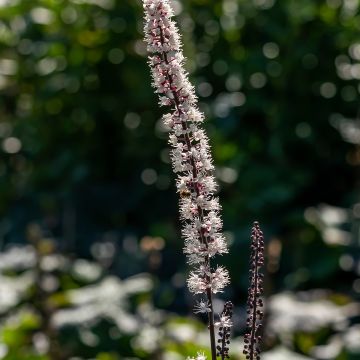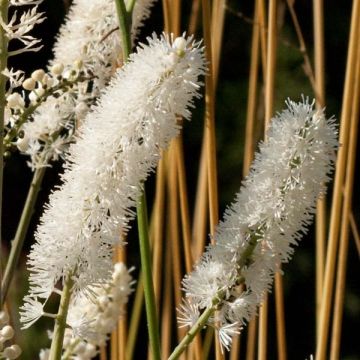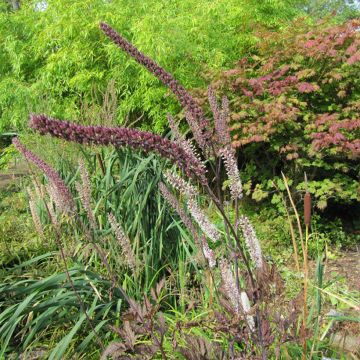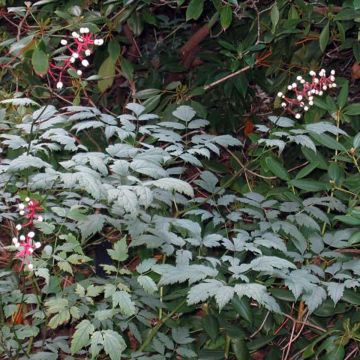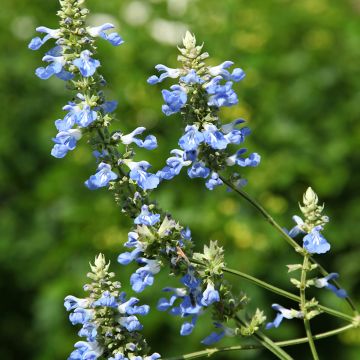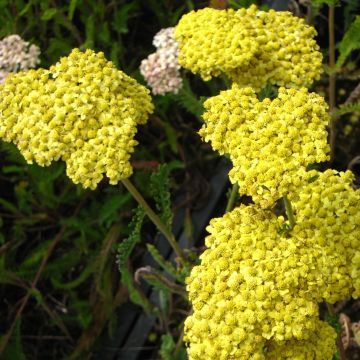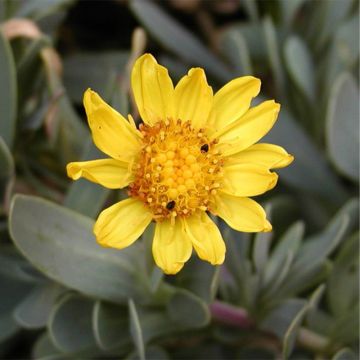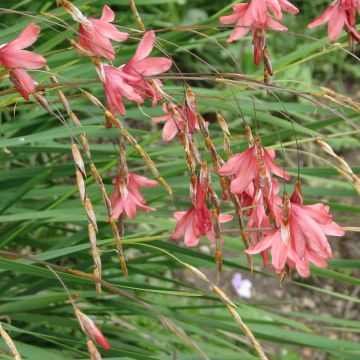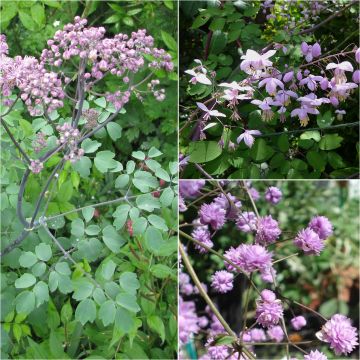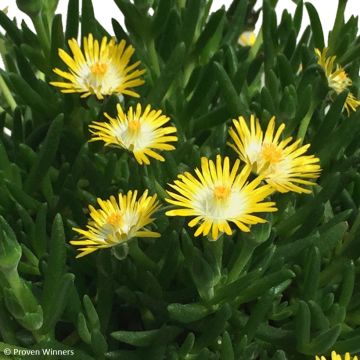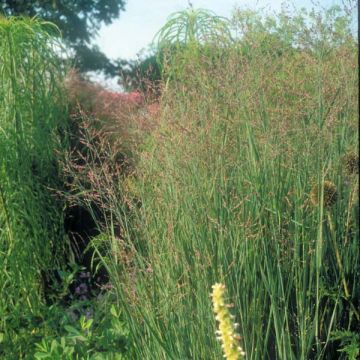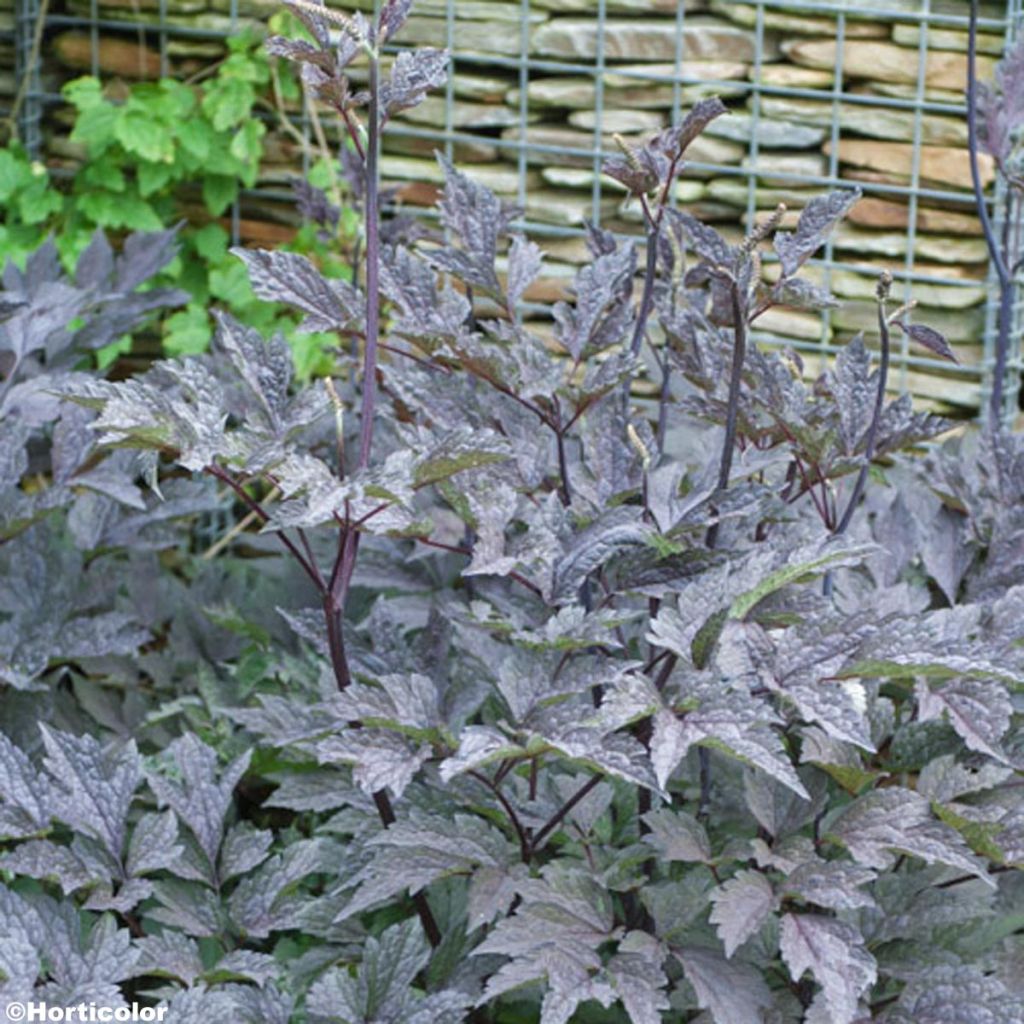

Cimicifuga simplex James Compton
Cimicifuga simplex James Compton
Actaea simplex James Compton
Bugbane, Baneberry, Black Snakeroot, Black Cohosh
This item cannot be shipped to the selected country
Delivery charge from €5.90
More information
Schedule delivery date,
and select date in basket
This plant carries a 12 months recovery warranty
More information
We guarantee the quality of our plants for a full growing cycle, and will replace at our expense any plant that fails to recover under normal climatic and planting conditions.
From €5.90 for pickup delivery and €6.90 for home delivery
Express home delivery from €8.90.
Does this plant fit my garden?
Set up your Plantfit profile →
Description
Cimicifuga or Actaea simplex 'James Compton' is a superb variety of black cohosh with very dark foliage and a highly fragrant flowering. This actaea is very similar to the cultivars 'Brunette' and 'Hillside Black Beauty' and stands out for its more compact habit and smaller size, making it suitable for small gardens. It also develops glossy and divided foliage, very dark purple-violet to almost black, forming a beautiful clump from which thin and flexible spikes emerge in late summer or autumn, adorned with pink buds that open into highly fragrant white-pink flowers. This perennial slowly establishes itself in moist soil, bringing lightness and height to partially shaded flower beds at a time when flowering is scarce.
Cicimifuga simplex, also known as Actaea simplex, is a deciduous herbaceous plant from the buttercup family native to forests in Japan and deep eastern Siberia, from Mongolia to the Russian Far East, to Sakhalin and Kamchatka.
'James Compton' is one of the dark-foliage forms (from the Atropurpurea Group) of this extremely hardy perennial. Developing from a knotty rhizome with fibrous roots arranged in compact masses, this plant slowly forms bushy clumps reaching a height of 90 cm (35in) when in bloom, with a minimum spread of 50 cm (20in). Its stems are covered with large compound, deeply cut leaves with toothed leaflets, as elegant as those of astilbes which are green when they first emerge. They gradually turn a very dark purple-violet colour, which appears almost black and is more intense when the plant receives sunlight. It flowers in late summer or autumn, in the form of large, purple, terminal inflorescences in spikes measuring 10 to 15 cm (4 to 6in) long, upright or arched, covered with pink buds that open into light star-shaped flowers with vanilla-like fragrance. This flowering is highly attractive to butterflies and bees.
Black cohosh 'James Compton' will thrive in partial shade, in the dappled light of a clear understory or at the edge of a forest, in deep soil retaining moisture. This plant tolerates root competition quite well. At the back of low flower beds, its sculptural silhouette and bright flowers will create a beautiful backdrop for perennials that have finished flowering in late summer. In a shaded border, its dark foliage pairs well with pink and blue aster stars and stands out against the multi-hued hydrangeas, hardy fuchsias, and tall ferns. This plant is very graceful in a slightly wild area and will also make a beautiful focal point when planted in a large pot on the terrace. Its flowers can be used to create lovely bouquets.
Report an error about the product description
Cimicifuga simplex James Compton in pictures
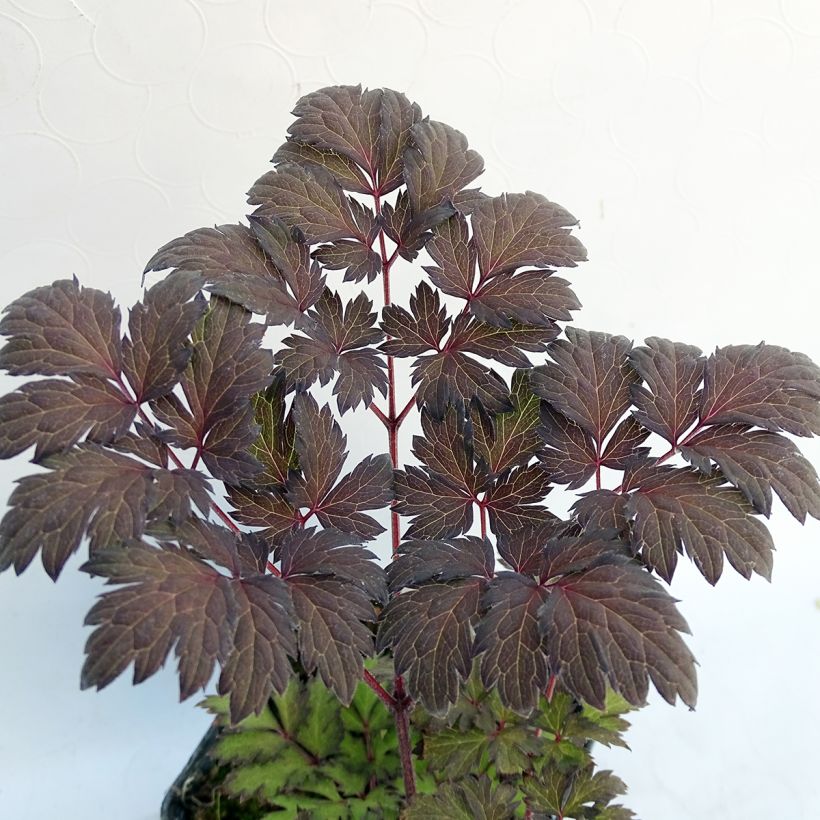

Flowering
Foliage
Plant habit
Botanical data
Actaea
simplex
James Compton
Ranunculaceae
Bugbane, Baneberry, Black Snakeroot, Black Cohosh
Cimicifuga simplex, Cimicifuga ramosa
Cultivar or hybrid
Other Cimicifuga
Planting and care
Cimicifugas thrive best in cool, semi-shaded areas. They also like rich and deep soils. Monitor watering, especially for young plants. They generally do not need staking and require no other maintenance. Prune dry foliage in early winter. It is a problem-free, easy to maintain plant that does not tolerate the dryness associated with full sun.
Planting period
Intended location
Care
-
, onOrder confirmed
Reply from on Promesse de fleurs
Summer flowering perennials
Haven't found what you were looking for?
Hardiness is the lowest winter temperature a plant can endure without suffering serious damage or even dying. However, hardiness is affected by location (a sheltered area, such as a patio), protection (winter cover) and soil type (hardiness is improved by well-drained soil).

Photo Sharing Terms & Conditions
In order to encourage gardeners to interact and share their experiences, Promesse de fleurs offers various media enabling content to be uploaded onto its Site - in particular via the ‘Photo sharing’ module.
The User agrees to refrain from:
- Posting any content that is illegal, prejudicial, insulting, racist, inciteful to hatred, revisionist, contrary to public decency, that infringes on privacy or on the privacy rights of third parties, in particular the publicity rights of persons and goods, intellectual property rights, or the right to privacy.
- Submitting content on behalf of a third party;
- Impersonate the identity of a third party and/or publish any personal information about a third party;
In general, the User undertakes to refrain from any unethical behaviour.
All Content (in particular text, comments, files, images, photos, videos, creative works, etc.), which may be subject to property or intellectual property rights, image or other private rights, shall remain the property of the User, subject to the limited rights granted by the terms of the licence granted by Promesse de fleurs as stated below. Users are at liberty to publish or not to publish such Content on the Site, notably via the ‘Photo Sharing’ facility, and accept that this Content shall be made public and freely accessible, notably on the Internet.
Users further acknowledge, undertake to have ,and guarantee that they hold all necessary rights and permissions to publish such material on the Site, in particular with regard to the legislation in force pertaining to any privacy, property, intellectual property, image, or contractual rights, or rights of any other nature. By publishing such Content on the Site, Users acknowledge accepting full liability as publishers of the Content within the meaning of the law, and grant Promesse de fleurs, free of charge, an inclusive, worldwide licence for the said Content for the entire duration of its publication, including all reproduction, representation, up/downloading, displaying, performing, transmission, and storage rights.
Users also grant permission for their name to be linked to the Content and accept that this link may not always be made available.
By engaging in posting material, Users consent to their Content becoming automatically accessible on the Internet, in particular on other sites and/or blogs and/or web pages of the Promesse de fleurs site, including in particular social pages and the Promesse de fleurs catalogue.
Users may secure the removal of entrusted content free of charge by issuing a simple request via our contact form.
The flowering period indicated on our website applies to countries and regions located in USDA zone 8 (France, the United Kingdom, Ireland, the Netherlands, etc.)
It will vary according to where you live:
- In zones 9 to 10 (Italy, Spain, Greece, etc.), flowering will occur about 2 to 4 weeks earlier.
- In zones 6 to 7 (Germany, Poland, Slovenia, and lower mountainous regions), flowering will be delayed by 2 to 3 weeks.
- In zone 5 (Central Europe, Scandinavia), blooming will be delayed by 3 to 5 weeks.
In temperate climates, pruning of spring-flowering shrubs (forsythia, spireas, etc.) should be done just after flowering.
Pruning of summer-flowering shrubs (Indian Lilac, Perovskia, etc.) can be done in winter or spring.
In cold regions as well as with frost-sensitive plants, avoid pruning too early when severe frosts may still occur.
The planting period indicated on our website applies to countries and regions located in USDA zone 8 (France, United Kingdom, Ireland, Netherlands).
It will vary according to where you live:
- In Mediterranean zones (Marseille, Madrid, Milan, etc.), autumn and winter are the best planting periods.
- In continental zones (Strasbourg, Munich, Vienna, etc.), delay planting by 2 to 3 weeks in spring and bring it forward by 2 to 4 weeks in autumn.
- In mountainous regions (the Alps, Pyrenees, Carpathians, etc.), it is best to plant in late spring (May-June) or late summer (August-September).
The harvesting period indicated on our website applies to countries and regions in USDA zone 8 (France, England, Ireland, the Netherlands).
In colder areas (Scandinavia, Poland, Austria...) fruit and vegetable harvests are likely to be delayed by 3-4 weeks.
In warmer areas (Italy, Spain, Greece, etc.), harvesting will probably take place earlier, depending on weather conditions.
The sowing periods indicated on our website apply to countries and regions within USDA Zone 8 (France, UK, Ireland, Netherlands).
In colder areas (Scandinavia, Poland, Austria...), delay any outdoor sowing by 3-4 weeks, or sow under glass.
In warmer climes (Italy, Spain, Greece, etc.), bring outdoor sowing forward by a few weeks.

































